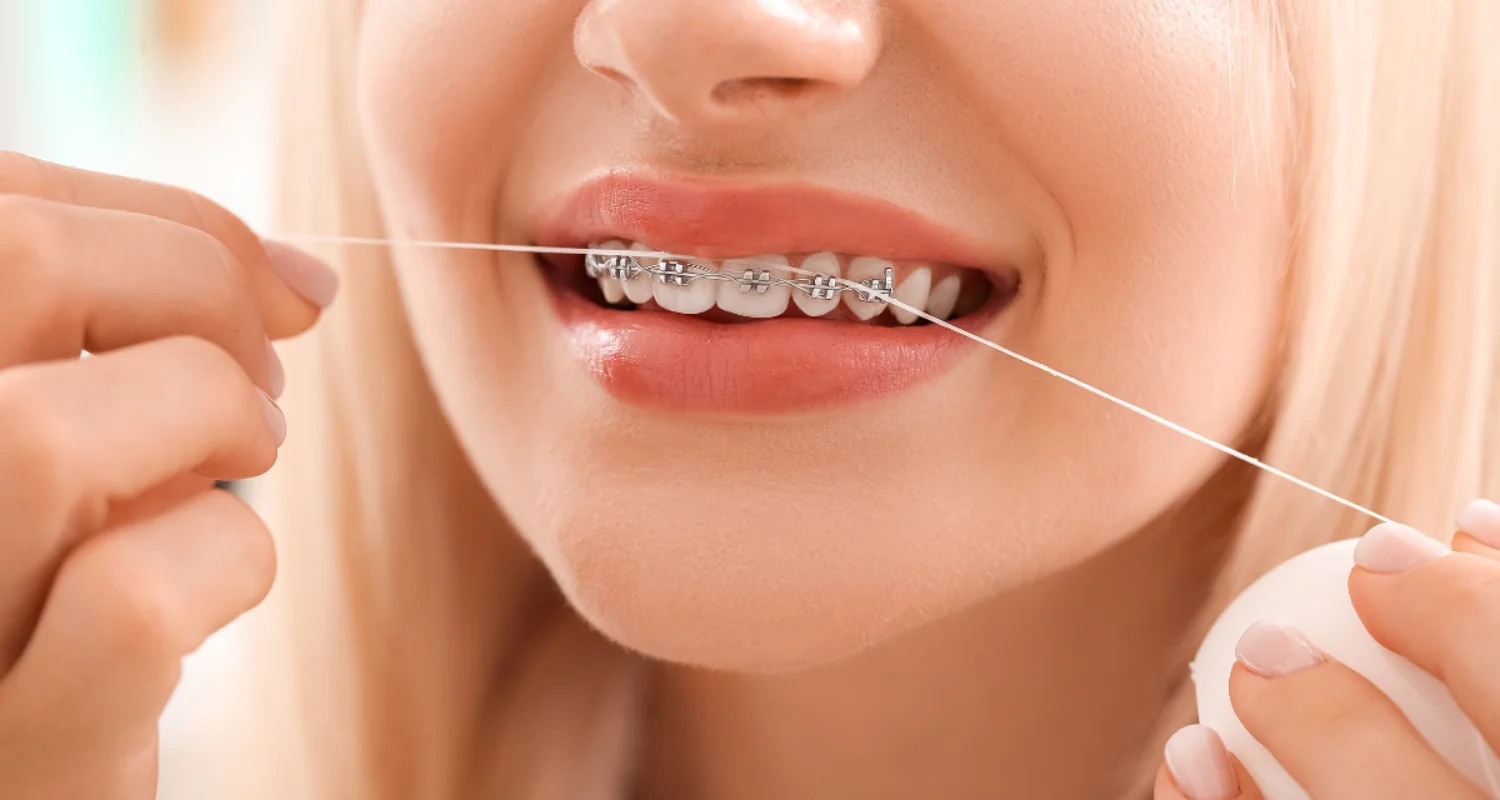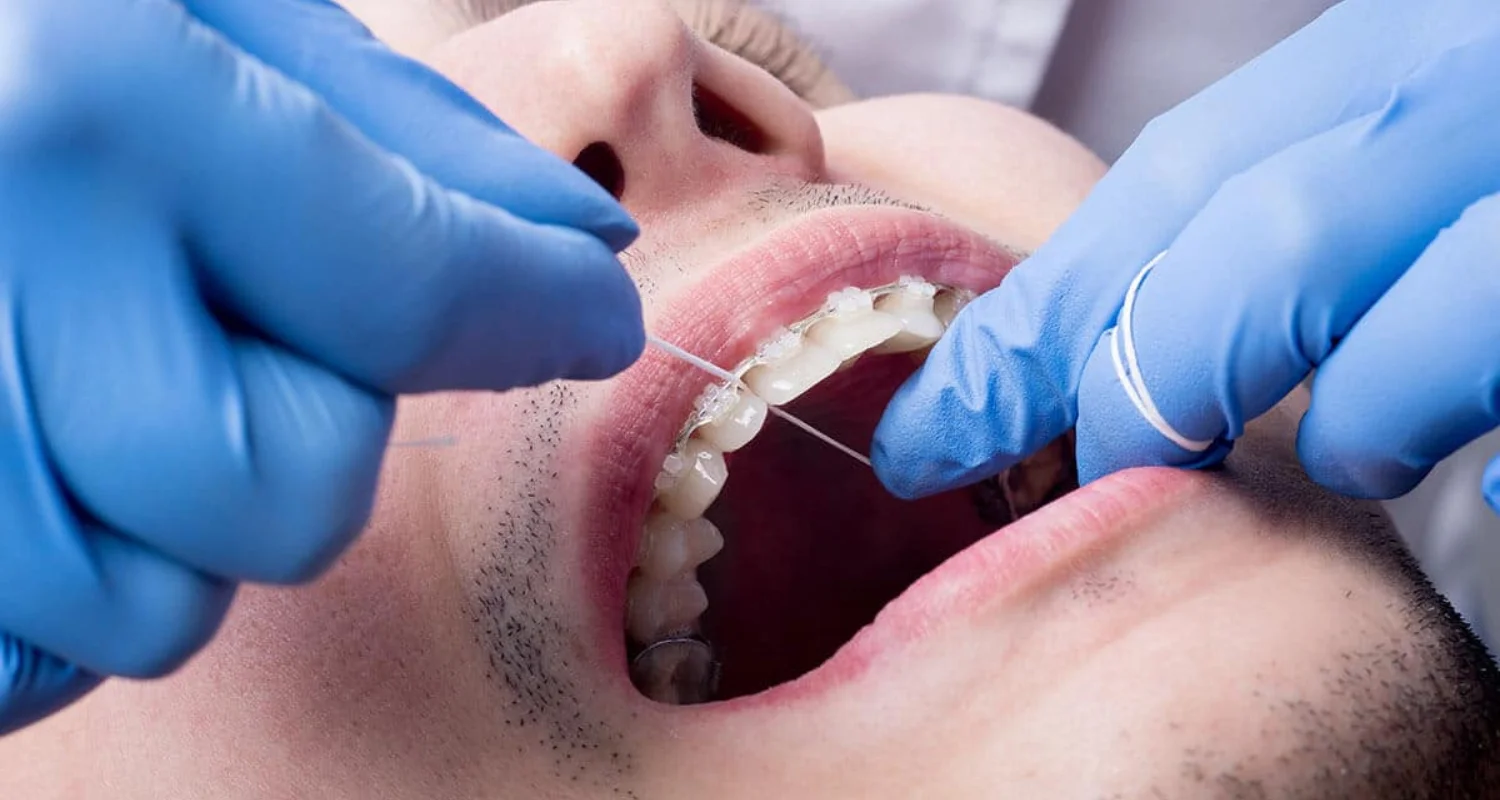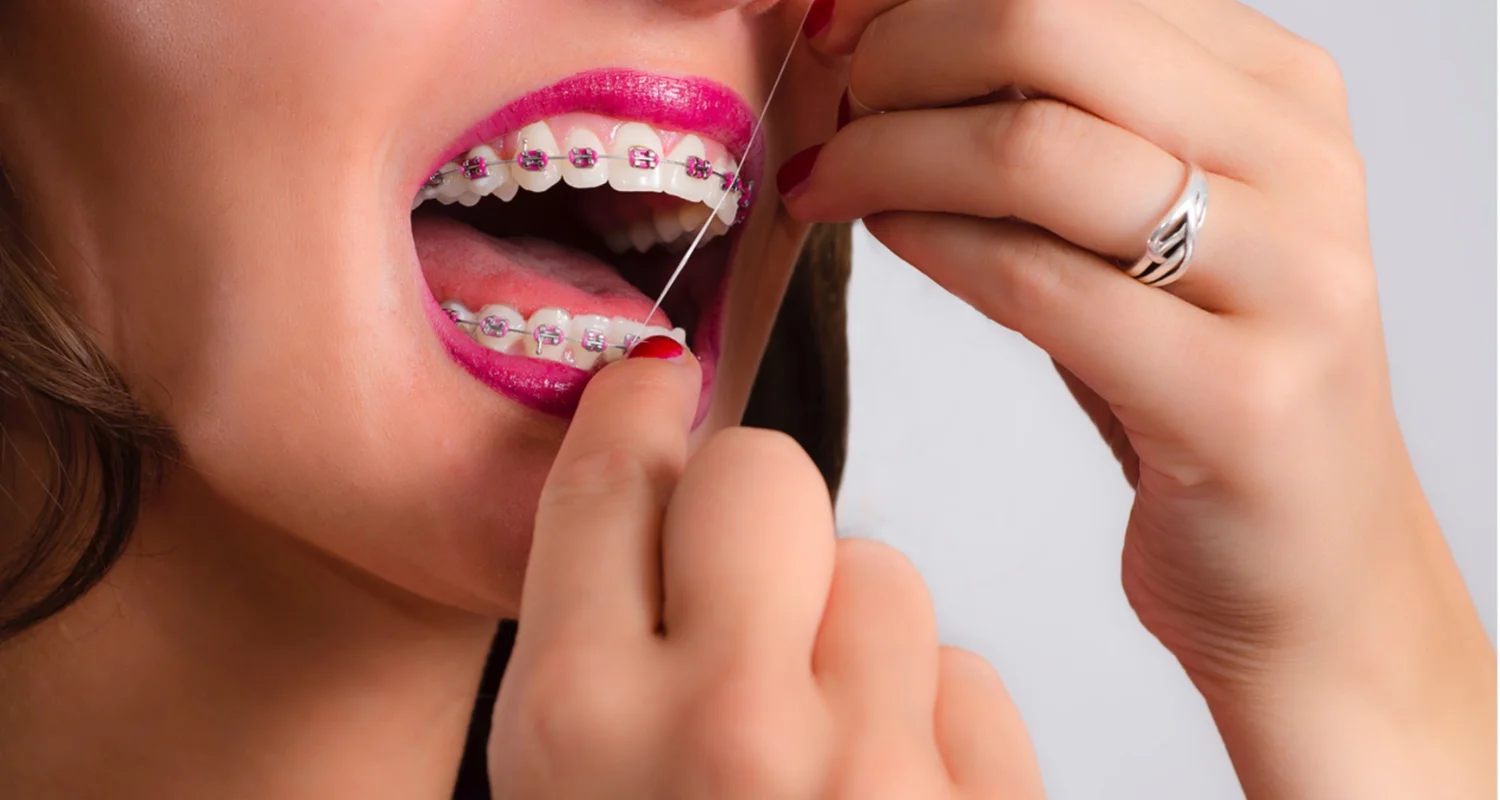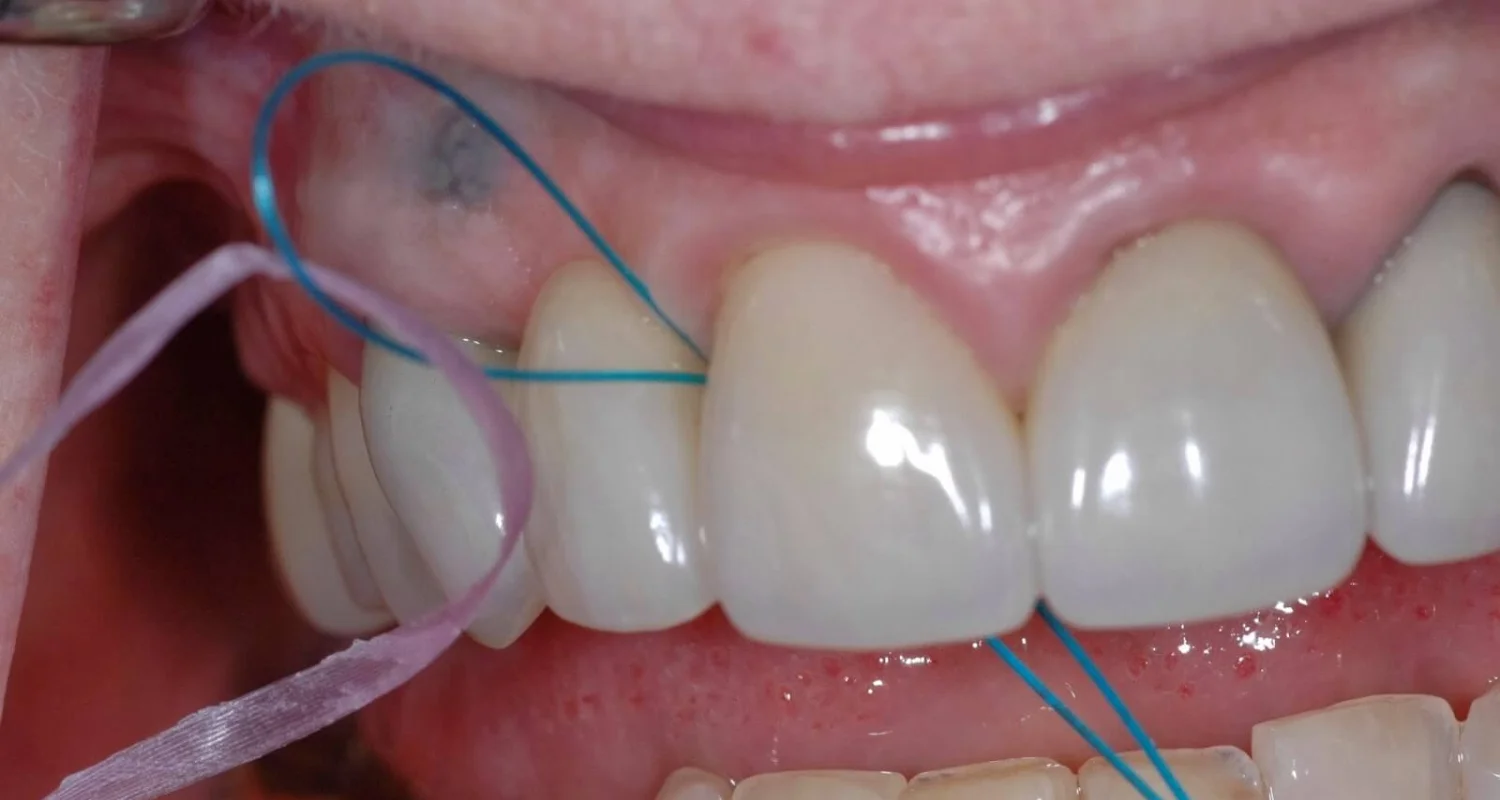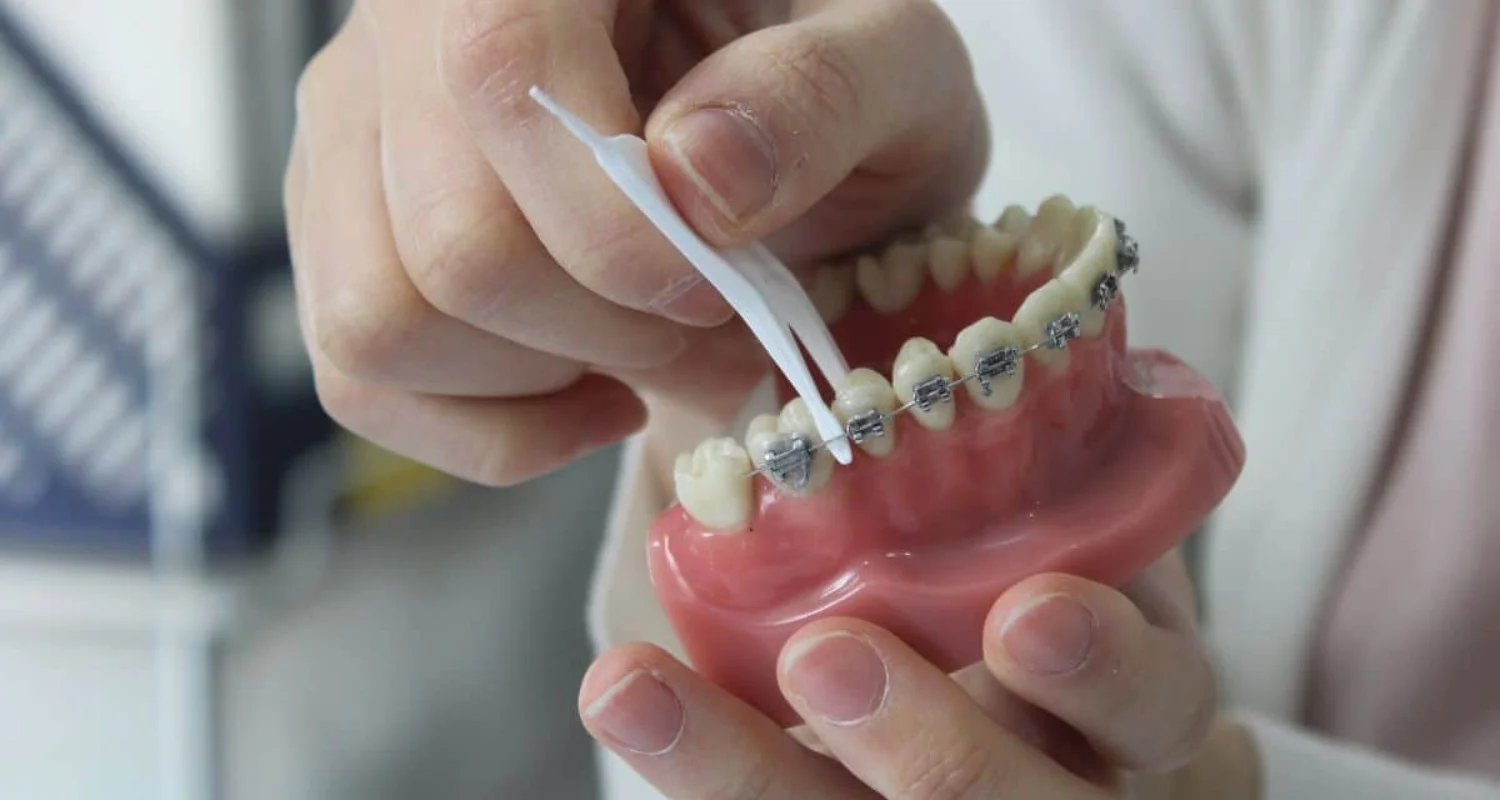Last Updated on: 15th December 2025, 10:44 am
Getting braces sets you on the path to a beautiful straight smile, but maintaining good oral hygiene is essential for achieving the optimum results. Therefore, as an adjunct to regular brushing, using dental floss with braces is mandatory, as it helps remove debris and bacteria from hard-to-reach areas, ensuring that your teeth stay healthy throughout the treatment.
While brushing and rinsing with mouthwash remain the same, flossing requires a different approach with braces. Research says that only about 41% of people in the U.S. floss daily as braces add an extra layer of complication because the wire connecting the braces prevents flossing with the traditional method. It may seem tricky at first, but it is crucial to do it right.
Therefore, in this article, we will learn about the importance of using dental floss with braces and discover tips on how to use it correctly.
Why Flossing with Braces is Important?
Using dental floss with braces helps protect against several dental issues and ensures smooth orthodontic treatment. Here’s why flossing with braces is important:
● Helps prevent plaque and tartar build-up
Spaces created by braces are easy places for food particles and plaque to get stuck. Hidden spaces are not easy to clean, leading to a tendency for plaque to build up and eventually form tartar. You can expect a higher risk of cavities and gum problems if you do not floss regularly.
● Contributes to healthy gums and teeth
Using dental floss with braces is of great importance in maintaining healthy gums, particularly in patients undergoing orthodontic treatment and wearing braces. Inflamed or swollen gums could actually hinder orthodontic treatment since it takes a longer time for your teeth to shift to the ideal position. Healthy gums ensure that your treatment goes according to plan.
Step-by-Step Guide to Floss with Braces
Using dental floss with braces can be simple and quick. Here are a few products and techniques along with their pros and cons for making flossing easier and more effective:
Traditional dental floss
Traditional floss is an effective tool for cleaning between teeth. It comes in waxed and unwaxed varieties, with waxed floss being easier to use, especially with braces. Buy a traditional dental floss in this link!
How to use it:
● Cut a piece of floss about 18 to 24 inches long.
● Thread the floss between the wire and your teeth, using a mirror to guide you.
● Wrap the ends of the floss around your index fingers for better control.
● Gently press the floss between the teeth and move it up and down along the sides of both teeth. For the upper teeth, shape the floss into an upside-down U: slide up the side of one tooth to the gumline, then down the side of the adjacent tooth.
● Carefully remove the floss and unthread it from behind the wire, avoiding any sudden movements that could dislodge the wire or bracket.
● Repeat the process for each pair of teeth.
Pros: affordable and effective.
Cons: may require a threader, can be tricky and uncomfortable with braces.
Dental tape
Dental tape is broader and flatter than traditional floss, making it a gentler option for sensitive gums. It’s used in the same way as floss, with a threader to navigate around braces. Get dental tape here!
Pros: easier for sensitive gums, affordable.
Cons: may cause bleeding and its high tensile strength may cause the brackets to dislodge.
Floss threader
A floss threader, resembling a plastic needle, is used to help pass floss behind the braces wires.
How to use:
● Cut about 18 inches of floss and loop it through the threader in the same way you would thread a sewing needle.
● Insert the plastic needle under the archwire of your braces and pull the floss through.
● Use the threader to guide the floss behind the braces wire and use it like you normally would.
Pros: makes it easier to use traditional floss with braces.
Cons: requires manual threading, which can be time-consuming.
If you want to know more, check floss threader here!
Superfloss
Superfloss is designed for cleaning around braces, bridges, and gaps. It has three components: a stiff threader, spongy floss, and regular floss. Buy Superfloss here!
How to use:
Thread the stiff end behind the braces wire, then use the spongy and regular floss to clean along the gum line and between teeth.
Pros: ideal for cleaning hard-to-reach areas.
Cons: spongy floss may not fit between all teeth.
Water flosser
A water flosser (oral irrigator) uses a pressurized stream of water to clean between teeth, eliminating the need for threading. Research shows that combining a water flosser with manual or sonic brushing effectively reduces bleeding, gum inflammation, and plaque, serving as a good alternative to traditional flossing methods.
How to use:
● Fill the reservoir with water or mouthwash.
● Insert the tapered tip, lean over the sink, and place the flosser in your mouth.
● Turn it on, close your lips to prevent splashing, and guide the water stream along the gum line and between teeth for about 30-60 seconds.
Pros: easy to use, no threading required, effective for gum health.
Cons: may not fully replace traditional flossing.
Click here to purchase your Water flosser
Dental Floss with Braces: General Tips and Tricks
To keep your teeth healthy and bright while wearing braces, follow these best practices:
1. Schedule regular cleanings: Get a deep cleaning done every 3 months to ensure good oral health.
2. When flossing with braces, consistency is key to maintaining oral health. Take your time to carefully clean between each tooth and around the brackets to ensure a thorough clean.
3. Avoid whitening toothpaste: While it might seem tempting to use whitening toothpastes, they can lead to uneven results. These products can only whiten exposed areas of your teeth, leaving discolored patches where the brackets were once attached.
4. Use an electric toothbrush: Electric toothbrushes are more effective at cleaning than manual brushes. They provide a more thorough cleaning with less effort. Although they can be pricey, they are worth the investment.
5. Use interdental brushes: Using interdental brushes along with regular brushing and flossing can help improve and maintain oral hygiene for people who wear braces.
Using dental floss with braces is essential for maintaining oral health and preventing issues like plaque buildup, gum inflammation, and cavities. Whether using traditional floss, dental tape, a floss threader, or a water flosser, it’s important to be consistent and take your time to ensure a thorough clean.
Developing a daily flossing routine, with flossing at least once daily, will help protect your smile and ensure successful results when your braces come off.
Frequently Asked Questions
What is the easiest way to floss with braces?
The easiest way to floss with braces is by using a floss threader or water flosser. A floss threader helps you guide floss under the braces wire, while a water flosser uses a stream of water to clean between teeth and around the brackets without needing to thread floss manually.
Should I floss with braces?
Yes, you should definitely floss with braces! Flossing removes trapped food particles and plaque between teeth and around braces, preventing cavities and gum problems, which are harder to control with just brushing.
What are the benefits of flossing teeth regularly, even with braces?
Regular flossing helps prevent plaque buildup, cavities, and gum inflammation. It ensures better oral health during orthodontic treatment and allows your teeth to move into the correct position without gum issues slowing down the process.
What are the benefits of cleaning between the brackets with normal thread (not waxed)?
Normal thread (unwaxed floss) can slide between tighter spaces and is usually thinner, making it a good option for closely aligned teeth. However, waxed floss is often easier to use with braces because it doesn’t shred as easily when moving around brackets and wires.
How do people with braces brush and floss their teeth?
People with braces should brush with a soft-bristled or electric toothbrush, angling it to clean around the brackets and wires. For flossing, use a floss threader, dental tape, or a water flosser to remove debris from between teeth and around the braces.
How bad is it not to floss your teeth when using braces?
Not flossing with braces can lead to serious issues, like plaque buildup, cavities, gum disease, and even delayed orthodontic treatment. Food and bacteria easily get trapped in the braces, increasing the risk of oral health problems if not properly removed through flossing.
Share
References
1. Anna H. (Apr, 2024). 5 Best Ways to Floss with Braces – Plus Instructions. NewMouth. https://www.newmouth.com/blog/how-to-floss-with-braces/
2. Tyler C. (Feb, 2024). How to Floss With Braces. Premier Orthodontics. https://yourazbraces.com/how-to-floss-with-braces/
3. How to Floss with Braces: 4 Different Ways. (Dec, 2022). Orthodontic Arts. https://www.orthodonticarts.com/how-to-floss-with-braces/
4. Kimberly H. (Jan, 2019). How to Floss with Braces. Healthline. https://www.healthline.com/health/how-to-floss-with-braces#tips-and-tricks
5. Clara P. (Jan, 2023). 4 Ways to Floss with Braces – wikiHow. wikiHow. https://www.wikihow.com/Floss-With-Braces
-
Nayibe Cubillos M. [Author]
Pharmaceutical Chemestry |Pharmaceutical Process Management | Pharmaceutical Care | Pharmaceutical Services Audit | Pharmaceutical Services Process Consulting | Content Project Manager | SEO Knowledge | Content Writer | Leadership | Scrum Master
View all posts
A healthcare writer with a solid background in pharmaceutical chemistry and a thorough understanding of Colombian regulatory processes and comprehensive sector management, she has significant experience coordinating and leading multidisciplina...



